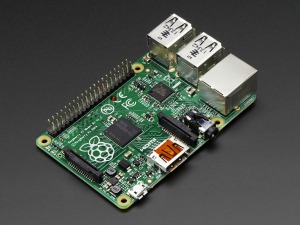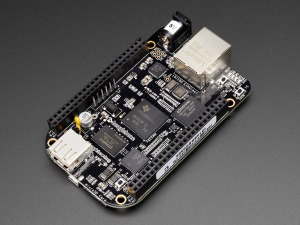 My work with the Raspberry Pi has slowed of late, due in no small part to a lot of travel so far this year. When I got back this weekend, powered up the Raspberry and updated Arch Linux ARM to the latest packages, as least as of Saturday 3 May. I then went through my usual of cleaning up the file system and creating a compressed image. It was at the end of that process I discovered my biggest problem to date: the size of the compressed ZIP file. It had grown over 500MB to roughly 1.5GB compressed.
My work with the Raspberry Pi has slowed of late, due in no small part to a lot of travel so far this year. When I got back this weekend, powered up the Raspberry and updated Arch Linux ARM to the latest packages, as least as of Saturday 3 May. I then went through my usual of cleaning up the file system and creating a compressed image. It was at the end of that process I discovered my biggest problem to date: the size of the compressed ZIP file. It had grown over 500MB to roughly 1.5GB compressed.
I tried to upload it to Sourceforge, only to find out they had a 1GB file size limit. So I pushed it out to the only place I have that would accept it, Goggle Drive. Please note that the older images have been deleted from Sourceforge, and for all intents and purposes, I’m done with using Sourceforge. From now on I’ll use Google Drive to hold publicly accessible compressed images, and Github to hold any source.
Furthermore, the link to Sourceforge on the main menu has been replaced with a link to my Raspberry Pi category. Simply click on it to read everything I’ve published on the subject, including posts like this one. It will help you quickly find what I’ve been doing as well as links to resources.
Here is the link to the compressed image zip file:
Link https://drive.google.com/file/d/0B3akRjoJF444SXA5dEJUeWJTdWc/edit?usp=sharing
I did download the file and found it took me, on my Brighthouse Networks connection, approximately 45 minutes.
And here is the link to the README.TXT file:
Link https://drive.google.com/file/d/0B3akRjoJF444cE9SV2R5R1ZvNGM/edit?usp=sharing
I’m going to repeat a good bit of the README, with additional comments.
Release Notes for my personal El Cinco de Mayo RPi Arch Linux Arm release
- The primary reason for this release is to fix Heartbleed in the OpenSSL libraries.
- The secondary reason is to remove unneeded applications, clean up work areas, and reduce as much as possible overall disk image usage.
The TWM-based X Windowing Arch Linux Raspberry Pi image has been updated
ArchLinuxARM-2014.05.05-rpi-twm08G.zip, located on my Google Drive location, contains ArchLinuxARM-2014.05.05-rpi-twm08G.img, a 7,948,206,080 byte file that can be flashed to an 8GB or larger SDHC or micro SDHC card. To use this image unzip and then copy the resultant 8GB file to your target SDHC or equivalent card.
This image has the TWM X window manager installed with custom configurations. All TWM related files are located in the subdirectory twm and its related subdirectories.
All Arch Linux ARM packages are updated as of 3 May 2014. NOTE: This includes updated ssl libraries to fix Heartbleed bug/exploit.
Note for future reference: My Raspberry Pi support system is a Samsung R580 with Ubuntu 14.04 LTS installed.
Node.js and Web Applications on the Raspberry Pi
Node.js is still installed, and updated from the Arch Linux Arm repositories.
Local node.js work directories have been cleaned out, leaving only two:
- express.jade (for web framework work)
- node_modules (for GPIO and I2C work)
To start the example node.js and Express web app:
- cd into express.jade
- type node app.js
You do not need to be root to run app.js. The web app listens on port 8080.
Security
Security has been scaled back with this image.
- the firewall is now inactive
I determined that my ruleset for the firewall (iptables) was incorrect. This resulted in less than ideal remote access. Furthermore, it was determined that iptables.service (see systemctl) had an adverse impact on performance. Therefore the iptables.service has been disabled and the link in /etc/iptables has been removed. If you wish to enable this on your own the various iptables files are still on the image for you to work with. Good luck.
- root login via ssh is still blocked, however.
- sudo pi now requires a password again.
Other Applications
Java 8, which was installed local to pi, has been removed, along with all Java tools, such as ant. It will not be re-installed.
Future application development will be via Javascript (node.js), Python (2.7.6 and 3.4.0 or later), and gcc (8.4.2). These, along with bash scripting, give you four different ways to develop. Adding Java 8 to the mix provided no real benefit to such a small machine, and proved to be a major resource consumer that the Raspberry Pi did not need to support. The four current languages also have the advantage of being supported out of the Arch Linux Arm repositories; Java 8 was downloaded direct from Oracle.
pacman
The pacman cache (/var/cache/pacman) has been cleaned up with pacman -Sc. This has removed all unnecessary package references, reducing pacman’s cache disk footprint by more than half (over 400MB).
Python
RPi.GPIO has been updated to 0.5.5. It is built and deployed in this image.
Note that ~/RPi.GPIO-0.5.5/test/test.py will not work as-is with Python 3.4.0. The print statement in that version of Python is a fully qualified function (see PEP 3105) and is fully enforced. I have included a patch in these release notes that you can cut and pasted into an individual patch file and apply to test.py.
Note to everyone: The fix is already in the test directory as test34.py, for Python 3.4.0. Even the patch is there as patch.txt. I bring this up in case you want to apply it to another installation on another distribution.
--- test.py 2014-04-21 08:45:14.000000000 -0400+++ test34.py 2014-05-03 00:54:50.910000000 -0400@@ -123,13 +123,13 @@ GPIO.setup(LED_PIN, GPIO.OUT) pwm = GPIO.PWM(LED_PIN, 50) pwm.start(100)-print "\nPWM tests"+print("\nPWM tests") response = raw_input('Is the LED on (y/n) ? ').upper() self.assertEqual(response,'Y') pwm.start(0) response = raw_input('Is the LED off (y/n) ? ').upper() self.assertEqual(response,'Y')-print "LED Brighten/fade test..."+print("LED Brighten/fade test...") for i in range(0,3): for x in range(0,101,5): pwm.ChangeDutyCycle(x)@@ -224,14 +224,14 @@ def cb(self,chan): self.switchcount += 1-print 'Button press',self.switchcount+print('Button press',self.switchcount) def setUp(self): GPIO.setup(SWITCH_PIN, GPIO.IN, pull_up_down=GPIO.PUD_UP) def test_switchbounce(self): self.switchcount = 0-print "\nSwitch bounce test. Press switch at least 10 times and count..."+print("\nSwitch bounce test. Press switch at least 10 times and count...") GPIO.add_event_detect(SWITCH_PIN, GPIO.FALLING, callback=self.cb, bouncetime=200) while self.switchcount < 10: time.sleep(1)@@ -239,12 +239,12 @@ def test_event_detected(self): self.switchcount = 0-print "\nGPIO.event_detected() switch bounce test. Press switch at least 10 times and count..."+print("\nGPIO.event_detected() switch bounce test. Press switch at least 10 times and count...") GPIO.add_event_detect(SWITCH_PIN, GPIO.FALLING, bouncetime=200) while self.switchcount < 10: if GPIO.event_detected(SWITCH_PIN): self.switchcount += 1-print 'Button press',self.switchcount+print('Button press',self.switchcount) GPIO.remove_event_detect(SWITCH_PIN) def tearDown(self):Accounts:
Console only: root, password: root
Console and ssh: pi, password: pi
As pi, to start the TWM X Windowing desktop, type startx at the prompt.




You must be logged in to post a comment.